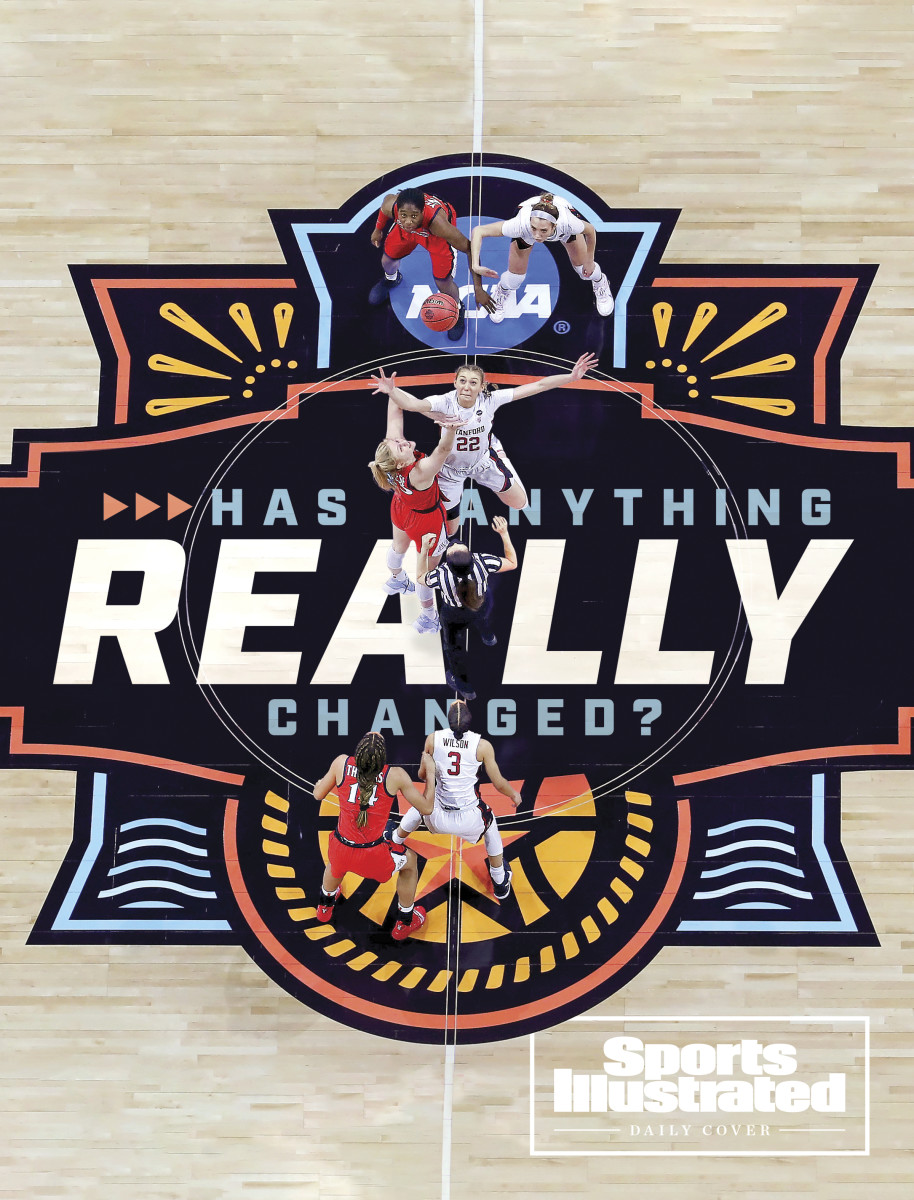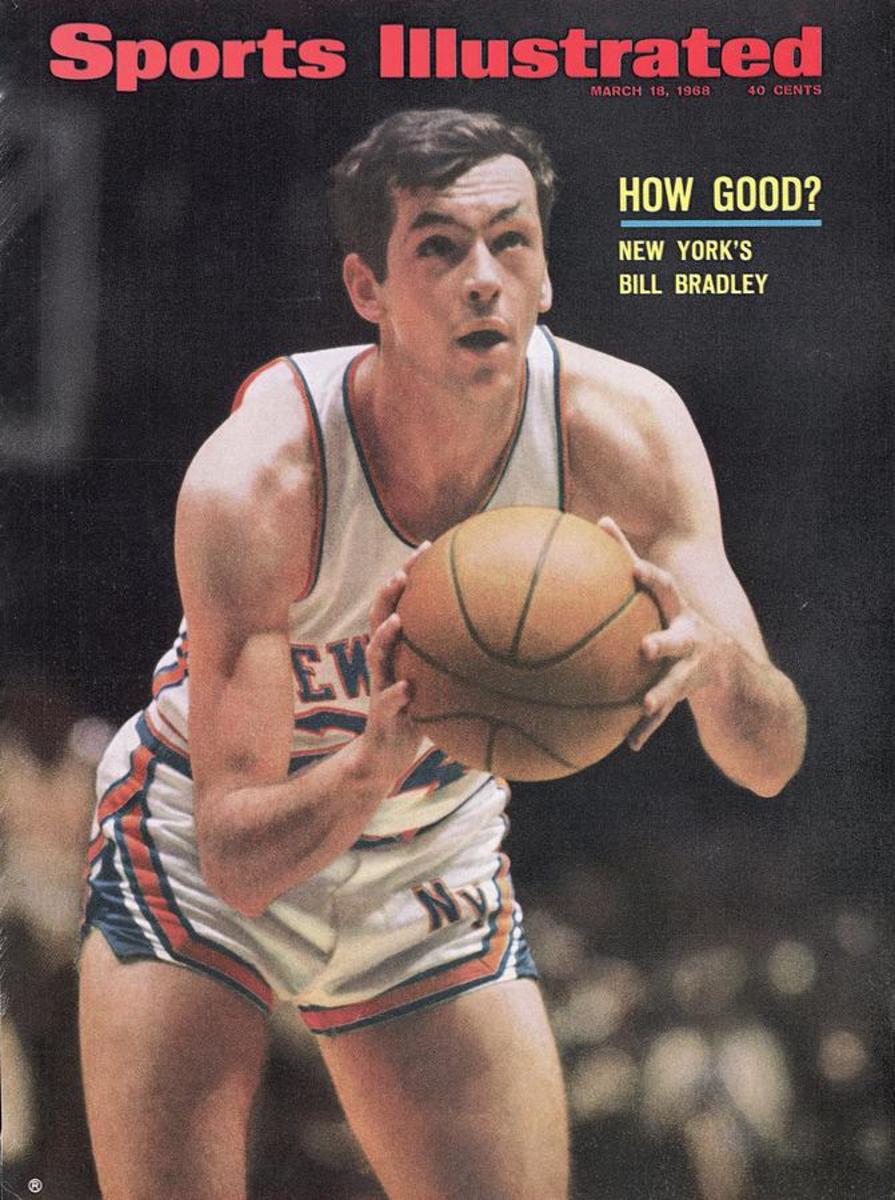SI:AM | A Guide to Women’s March Madness
Good morning. I’m Dan Gartland, still reeling from a wild first full day of March Madness.
If you’re reading this on SI.com, you can sign up to get this free newsletter in your inbox each weekday at SI.com/newsletters.
What you need to know about the women’s tournament
Today might be the best day on the sports calendar all year. Between the second day of first-round men’s games and the opening day of the women’s round of 64, there are 32 Division I tournament games on TV today, tipping off between 11:30 a.m. ET and 10 p.m. ET.
I’m proud of how SI has ratcheted up its coverage of women’s sports in recent years, particularly on the WNBA and women’s college game. Ben Pickman covers both sports for us and has been churning out tournament analysis all week. As we prepare for the tournament to tip off, I asked Ben to share some of that inside with SI:AM readers. My questions to him are below in bold, followed by his answers.
Like Gonzaga on the men’s side, South Carolina seems to be the prohibitive favorite to win it all. But their loss to Kentucky in the SEC tournament showed that the Gamecocks aren’t unbeatable. You picked them in your bracket, but if you had to choose, are you taking South Carolina or the field?
If you’re setting the question up that way, I think I’d take the field. The reason being that despite all of the Gamecocks’ greatness this season—and they’ve been great—there were certainly stretches this year when their offense went cold, if even for just a quarter. South Carolina possesses the country’s top defense, in terms of HerHoopsStats.com’s defensive rating, as well the country’s top overall player, forward Aliyah Boston, but it was only 50th in the nation in points per game on offense. They also eked out competitive wins over fellow No. 1 seeds Stanford and NC State earlier in the year. Those games alone were tight enough to know that South Carolina could still be beaten on an off night.
I mentioned Kentucky, which a lot of people are high on after they won the SEC championship. You’ve got the Wildcats losing to Princeton in the first round. What’s up with that?
Picking Princeton to beat Kentucky was less about Kentucky, frankly, and more about how good I think the Tigers have been this year. Per HerHoopsStats, Princeton is No. 5 in the country in defensive rating, holding opponents to just 50.9 points per game. It has won 17 consecutive games and gone undefeated in Ivy League play. It would have likely made the tournament as well had it lost in the Ivy League tournament final to Columbia. Kentucky, unquestionably, has the best singular player on the floor in this fascinating first-round contest in likely top-three WNBA draft pick Rhyne Howard. But I think Princeton’s defense will be super disruptive for the Wildcats.
The women’s tournament has seen an increase in upsets in recent years, which you’ve reflected in your bracket. You’ve only got one No. 1 seed (South Carolina) in the Final Four. Is that more a reflection of a weaker crop of top seeds this year or parity in the game’s upper levels?
Can the answer be a little bit of both? I think in the case of Louisville, here is a team that has lost two of its last five games and, heading into Selection Sunday, was likely going to be a No. 2 had Baylor won the Big 12 title. In the cases of Stanford and NC State, I think both have difficult paths to the Final Four and could face teams that have matched up well against them either this season or last year.
On the topic of upsets, I’ve already read why you think UCF, Princeton and Stephen F. Austin are potential bracket busters. Are there any other underdogs you have your eye on?
Gonzaga is a team I think could surprise a lot of people. The Zags feature incredible depth—seven players average between 18.8 and 25.6 minutes per game—and don’t rely on any single player to carry the load. No one averages more than 11 points per game. Instead, the Bulldogs play sound basketball on both ends of the floor. Per HerHoopsStats, they are in the top 20 nationally in both offensive and defensive rating. They have to play Nebraska in the first round and then would likely play Louisville, in round two at the KFC Yum! Center. Still, I think the Bulldogs are solid enough to break the Wichita Region open.
It’s probably just because I’m from Connecticut, but I feel like UConn is always one of the top stories of the tournament, even when (or perhaps because) the Huskies aren’t the favorites. It’s a shame that Paige Bueckers hasn’t been at full strength, but am I biased in thinking that the questions surrounding her injury make UConn one of the most intriguing teams in the field?
They definitely are one of the most intriguing teams in the whole field, and the intrigue only grew once they were placed in the Bridgeport Region. UConn enters the NCAA tournament riding a 10 game win streak, winning each of its last three contests in the Big East tournament by double digits. Its defense has been much improved of late, allowing more than 55 points just once since Feb. 13.
Still, Bueckers has yet to play more than 18 minutes since returning from the knee injury that knocked her out for most of the season. And while the team has been understandably cautious with her, we don’t exactly know what she’ll look like or how coach Geno Auriemma will use her in the NCAA tournament. They could make the Final Four or they could lose early (at least by UConn standards) in the tournament. Playing at home, or close to it, will definitely help, but there is definitely still a lot of potential variance.
I’ll end with a big-picture question. In response to various inequalities between the men’s and women’s tournaments highlighted by players last year, the NCAA made several improvements to the women’s tournament. Will those moves be noticeable to viewers this year or are they primarily about the long-term health of the sport?
There are certain short-term changes fans will immediately notice this year—most notably the use of “March Madness” branding in relation to the women’s tournament. A number of other recommendations suggested in a report by law firm Kaplan Hecker & Fink LCC have also been enacted this year. Still, many of these changes seem to be long overdue steps, and I think we’ll see just how effective some of the changes are once play begins. The other thing I’d say is I’d recommend checking out what my colleague Emma Baccellieri has reported on the reckoning, which was in many ways sparked by this picture. Her story on that is today’s Daily Cover.
📧 SI’s Morning Madness newsletter is back. Our free, daily NCAA tournament newsletter has everything you need to stay up-to-date on all the madness. Sign up for free at SI.com/newsletters and read today’s edition here.
Ten years after Duke-Lehigh
I don’t want to spend too much space recapping yesterday’s men’s action, but the Saint Peter’s Peacocks deserve a special shoutout. With their win over Kentucky, the New Jersey Jesuit school became the tenth No. 15 seed to upset a No. 2 seed. It’s the second year in a row that we’ve seen a 15–2 upset (after Oral Roberts over Ohio State).
Playing a No. 2 seed is already daunting enough for a No. 15 seed, but Saint Peter’s had the added challenge of facing Kentucky in Indianapolis (just three hours from Lexington). Kevin Sweeney was in the building and came away impressed by the Peacocks’ fearlessness:
“Saint Peter’s brought the fight to Kentucky from the opening tip. While clearly undersized, the Peacocks had no fear going up against one of the nation’s most imposing front lines. Two fouls in the first two minutes on second-leading scorer and top defender KC Ndefo didn’t phase them. Scoring two points before the game’s first media timeout? Didn’t phase them. Neither did big dunks by Jacob Toppin or loud roars from the Kentucky crowd. Saint Peter’s kept getting knocked down and kept picking itself up off the mat.”
The party was on in Jersey City after the final buzzer in overtime. Across the rest of the country, millions of people mourned their busted brackets. After the Saint Peter’s win, only 743 of the more than 17 million brackets submitted to ESPN remained perfect—and that was with six games still left to finish the day’s slate. Only 743 people correctly picked all 10 of the games played to that point. This morning, with all 16 games in the books, only 14 perfect brackets remain in Yahoo’s game.
The best of Sports Illustrated

As Ben mentioned above, Emma wrote today’s Daily Cover about how people in women’s basketball think the changes to make the tournaments more equitable were long overdue:
“On the one hand, you’re like, Thank you. You know, the players don’t have to feel less-than in those areas anymore, so you do want to say thank you,” says UCLA women’s basketball coach Cori Close. “And on the other hand, you want to go, Really? Like, really, it took a major crisis and millions of dollars spent on analysis to come up with, We need to treat them the same?”
Ben also wrote about the Florida women’s team’s journey back to the NCAA tournament. … Kevin Sweeney was in Indianapolis for Michigan’s big comeback against Colorado State, sparked by an unlikely hero. … Rohan Nadkarni examines the impact Stephen Curry’s injury will have on the NBA playoff picture.
Around the Sports World
Penn swimmer Lia Thomas is the first openly trans athlete to win a Division-I championship. … The Packers are reportedly trading Davante Adams to the Raiders, where he’s expected to sign a big contract. … Baker Mayfield has requested a trade but the Browns don’t plan on moving him, according to Albert Breer. … A missed call helped Richmond secure its upset over Iowa. … Another blown call thwarted South Dakota State’s upset bid against Providence. … The draw for the UEFA men’s Champions League was conducted this morning.
The top five...
… individual performances from last night:
5. An Indiana cheerleader who retrieves a ball that got stuck on the backboard
4. Gonzaga’s Chet Holmgren against Georgia State: 19 points, 17 rebounds, seven blocks
3. Longwood’s Akila Smith scores 32 in the Lancers’ women’s First Four win over Mount St. Mary’s
2. New Mexico State’s Teddy Allen scores 37 points in the No. 12 seed Aggies’ upset over No. 5 UConn
1. Pistons’ Saddiq Bey: 51 points on 17-of-27 shooting (10-of-14 from three), adding to the NBA’s list of recent 50-point games
SIQ
On this day in 1942, five years before breaking baseball’s color barrier, Jackie Robinson tried out with which MLB team?
- Phillies
- White Sox
- Cubs
- Tigers
Check Monday’s newsletter for the answer.
Yesterday’s SIQ: When did Notre Dame officially adopt the Fighting Irish nickname?
Answer: 1927. According to the school, the earliest recorded instance of the nickname being applied to Notre Dame is from an 1899 game against Northwestern in Evanston when fans of the home team started derisively chanting “Kill the Fighting Irish!”
An alternate origin story says that an unnamed Notre Dame player attempted to inspire his teammates (many of them of Irish descent) during halftime of the 1909 game against Michigan by saying, “What’s the matter with you guys? You’re all Irish and you’re not fighting worth a lick.”
One more version says the football team was named after the Irish immigrants who fought for the Union in the Civil War. The chaplain of one regiment of Irishmen from New York was Rev. William Corby, who went on to become the third president of Notre Dame.
Whatever the origin, the nickname is said to have been popularized by Éamon de Valera’s 1919 visit to the Notre Dame campus. An Irish freedom fighter and leader of the ’16 Easter Rising, de Valera would later become the third president of Ireland. His visit to South Bend, to drum up support and funds for the fight against British rule, galvanized support for the Fighting Irish nickname. More than 100 years later, it remains synonymous with the school.
From the Vault: March 18, 1968

Judging solely by the cover of this issue, I assumed the accompanying story would be trying to contextualize the greatness of future Hall of Famer Bill Bradley. Boy, was I wrong. The subheadline on the article inside says Bradley “often plays poorly—when he is not on the bench.”
For some context, Bradley averaged 30.2 points per game in three seasons at Princeton (freshmen weren’t allowed to play varsity back then), winning three Ivy League titles and reaching one Final Four. The Knicks took advantage of the last year of territorial draft picks—and being ever so slightly closer to Princeton than the 76ers—to pick up Bradley in 1965. But his NBA debut would have to wait until after he completed his Rhodes scholarship at Oxford. (While studying in England, Bradley traveled to Italy regularly to play professionally for Olimpia Milano.)
Bradley was finally able to join the Knicks in December 1967 after being discharged from the Air Force. He played 10 games and then got hit by a car, which caused him to miss six games. (He wasn’t seriously injured.)
So it should be understandable that Bradley wasn’t an instant star in the NBA, but observers were impatient and wondered if the consensus College Player of the Year would ever live up to the hype. Kirkpatrick was not shy to point out the flaws in Bradley’s game (off-ball movement and “all the phases of defense”) but he concluded that Bradley would eventually “control his team in a way that will make New York a vital force for years to come.”
Ultimately, the biggest problem for Bradley was that he was playing out of position. A natural small forward, he was playing at guard. That seems to be a result of some outdated thinking about guys Bradley’s size. (“One of the toughest obstacles that Bradley has had to contend with is, of course, his size,” Kirkpatrick wrote. “At 6' 5" he is an in-between player—too big for the back-court and too small for the corner.”)
These days, we’d call a guy like Bradley a swingman. In the late ’60s, according to Kirkpatrick, they were known as “bastard” forwards. Whatever you want to call him, Bradley was deployed at his usual position in future years and had an excellent 10-year career before retiring and getting into politics.
Check out more of SI’s archives and historic images at vault.si.com.
